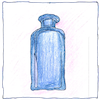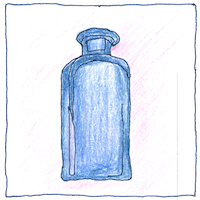Avicenna (Ibn-Sīnā)
medicine

|
The Canon of Medicine
Avicenna’s encyclopedia of medicine synthesized Galen, Aristotle, and traditional medical practice in India and became a standard medical textbook in Europe for over six hundred years. Book 1 explains Aristotle’s four causes (material, efficient, formal, and final), the four elements (earth, water, air, and fire), the four temperaments (hot, cold, moist, and dry), the eight varieties of equipoise, and the dozen or so natures of body parts including the oil, the fat, the breath, and the heart from which the breath arises, from cold to hot, dry to moist, the temperaments of the four periods of man, the five stages of childhood, and the four humors (blood, phlegm, yellow bile, and black bile) with sanguineous, serous, bilious, and atrabilious temperaments. Book 1 ends by classifying body parts according to the four humors and the four causes. Book 2 lists alphabetically descriptions of eight hundred simple floral, mineral, and animal substances that could be proscribed as medicines by themselves or compounded according to seven rules— the earliest guidelines for experimental medical practice. Book 3 describes the diseases that affect specific body parts arranged from head to toe. Book 4 describes the diseases that affect the body as a whole. Book 5 is the “formulary,” describing six hundred and fifty compound drugs, giving the recipe sources and origins of their ingredients, and describing their effectiveness.
Experimental medicine
For testing the potency of a drug through experimentation: 1. The drug must be free of any quality acquired by accident. A drug to affect heat, for example, should not be stored too near a drug to affect cold. For example, almond, which is neutral, strongly affects heat when rancid. 2. Test a drug on a person only if the person has a simple, not composite, condition. A person suffering from phlegmatic fever, for example, could be treated to alleviate the phlegm or the fever. If a drug works we won’t know which condition it alleviates. 3. Test a drug on contrary conditions. If it works on one but not on the other, we know which condition it helps. If it works on both, it could have a secondary effect but we won’t know what its primary effect is. A drug could have a warming effect on a cold disease but also remove yellow bile. If we test it for a hot disease like diurnal fever, then we won’t know whether it relieves a cause or a symptom. 4. Begin testing with a weak dose and gradually increase the strength of the drug to equal the strength of the disease. For when combatting the coldness of a disease a drug supposed to produce warmth may fail if too much of it is given at first. 5. Consider the time it takes for the drug to take effect. A drug with an immediate effect acts against the disease itself, but if an initial effect is contrary to a later effect or if the first effect is delayed, then there is only uncertainty and confusion about the potency of the drug. 6. The effect of the drug should be the same all cases or at least in most cases. If the effect isn’t consistent, then it could be accidental. 7. Conduct experiments only with human beings. Whereas a drug might be hot to the human body it might be cold compared to the lion’s body or to the horse’s body.
Canon
A canon is a law, in Greek, originally, a measuring rod. In literary circles, “the canon” is a set of standard works. In music, a round in which all voices are not identical.



Ibn-Sīnā’s full Arabic name is Abū ‘Alī al-Ḥusayn ibn ‘Abd Allāh ibn al-Hasan ibn Ali ibn Sīnā.
Although for us in the Western civilizations, his work is unusable today because of its focus on the humors and temperaments, it is still used in Yunani medicine.
See also in The book of science:
Readings in wikipedia:
Other readings: